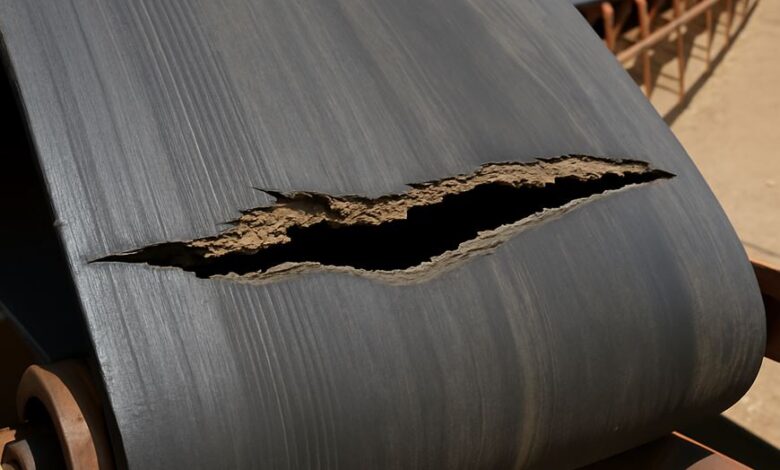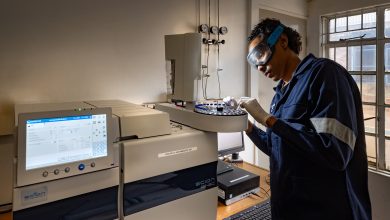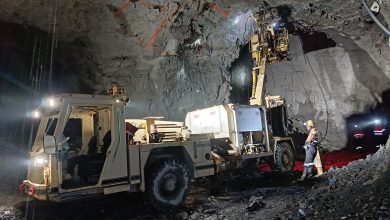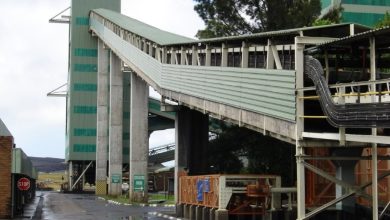
Intelligent conveyor belt monitoring – combining ultrasonic, vibration, and acoustic sensors with machine learning – offers real-time, accurate, and early detection of longitudinal conveyor rips before they escalate and cause costly failure. It is a vital tool for mining companies focused on operational efficiency and reliability.
By Nick Barnes
For operations undermining the significance of sound conveyor belt rip detection, picture this: A seemingly small rip on a conveyor belt can have a domino effect, halting critical processes all the way to the mill. The ensuing production loss can translate into revenue loss. In a worst-case scenario, damage to components may necessitate unplanned repairs and replacements, coupled with potential fatalities. Not a desirable experience when production is at its peak.
Let’s face it: Performing longitudinal conveyor belt rip detection using conventional systems often falls short of enhancing equipment efficiency, safety, and reliability.
Shortcomings of Conventional Detection (Traditional Monitoring)
While they serve a purpose, conventional detection systems — such as inductive loops and fibre optics — have inherent shortcomings.
Miniotec, a conveyor belt automation consulting firm, analyses the two techniques in a review: “Inductive loop systems require embedding sensor loops into the belt, which can compromise belt integrity and are susceptible to damage, leading to false alarms.”
On fibre optic sensors, the company points out, “While sensitive, they demand significant infrastructure investment and are prone to environmental or operational damage, making them less ideal for harsh mining environments.”
What’s worse, these systems often struggle under varying operational conditions that adversely affect detection capabilities. For instance, there have been instances where these systems have failed to detect anomalies promptly, resulting in extensive belt damage and costly downtime.
So, it beggars belief why many mining operations still stick to using conventional methods despite increasing data on costly failures.
Intelligent Conveyor Belt Rip Detection
Certainly, it is worthwhile to explore the opportunities conveyor automation through intelligent belt monitoring offers. By combining universal sensors and smart (intelligent) analytics, mining companies can detect conveyor belt rips in real-time.
The integration of ultrasonic, vibration, and acoustic sensors creates a multi-sensor cluster monitoring approach. This combination brings real-time data, which enhances detection accuracy across diverse operational conditions.
Through correlating data from multiple sensors, automated systems can deliver broad but precise insights. Machine learning algorithms analyse patterns across various operational scenarios and sensor inputs to identify and predict potential failures before they occur. This ensures consistent and continuous monitoring for predictive maintenance.
Generally, it provides the ability to anticipate issues and address them proactively before they snowball into costly crises.
In particular, mining operations benefit from continuous real-time monitoring of belt rips through automated systems in the following ways, according to Tru-Trac:
- Increased Efficiency
By streamlining processes, automation results in faster and more efficient material handling. - Reduced Downtime
Early detection of potential problems informs proactive maintenance strategies, which minimise downtime.
iii. Enhanced Safety
There is a high risk of carrying out manual interventions in hazardous areas. Automation can reduce the need for this, improving worker safety.
- Lower Maintenance Costs
By preventing damage and optimising performance, automation can lead to lower maintenance costs.
A Vital Tool
There is no question that, as mining companies focus on enhancing equipment efficiency, safety, and reliability of their conveyor systems, intelligent belt rip detection is a vital tool.
Credits for some of the information:
“Conveyor Belt Rip Detection: Using Universal Sensors and Smart Analytics to Improve Mining Operations in Real-Time” – Miniotec
“How Multi-Sensor Intelligence is Reshaping Conveyor Belt Reliability” – Tru-Trac
Pic 1 – A belt rip detection used to detect longitudinal rips on steel cable and fibre conveyor belts in real-time






